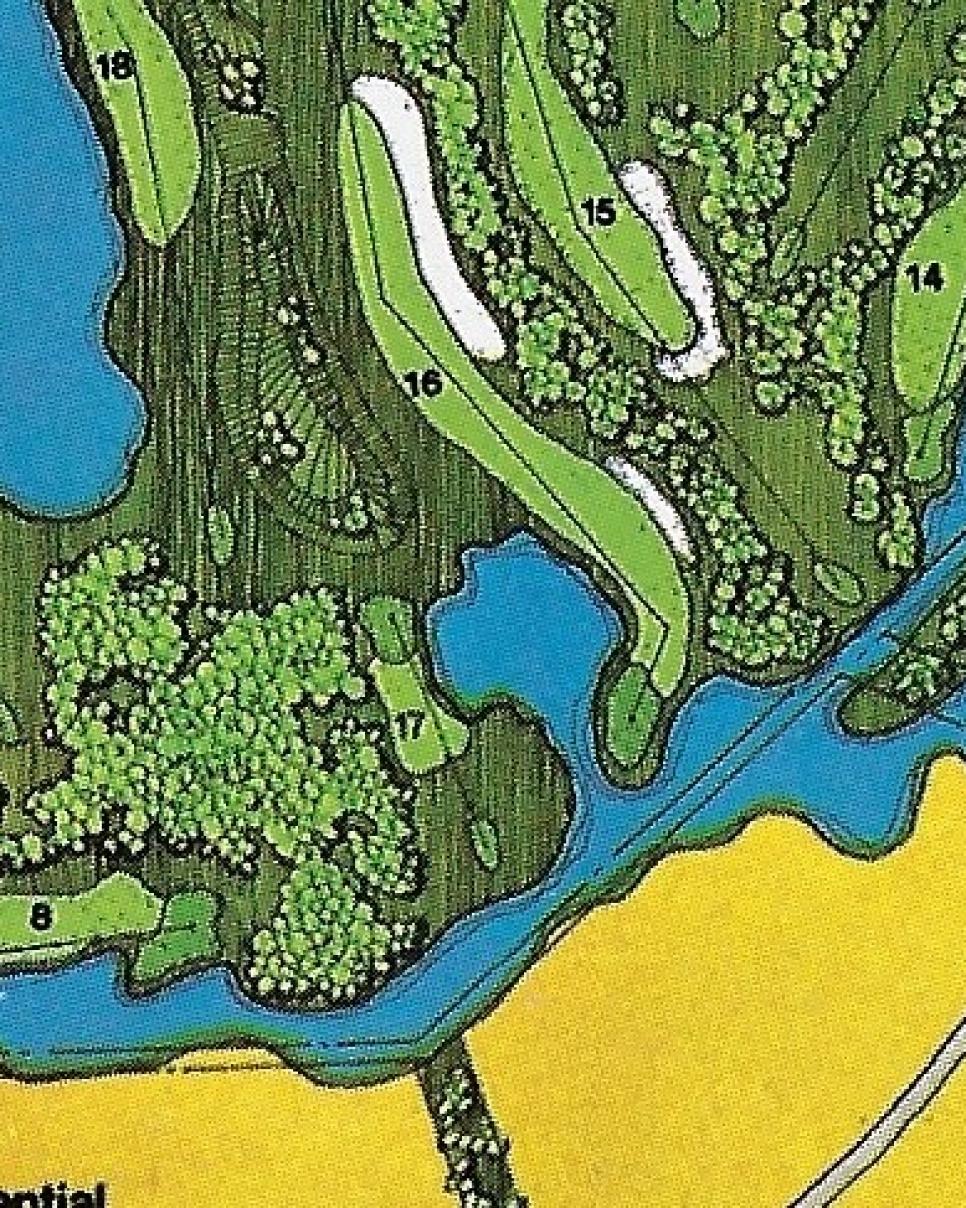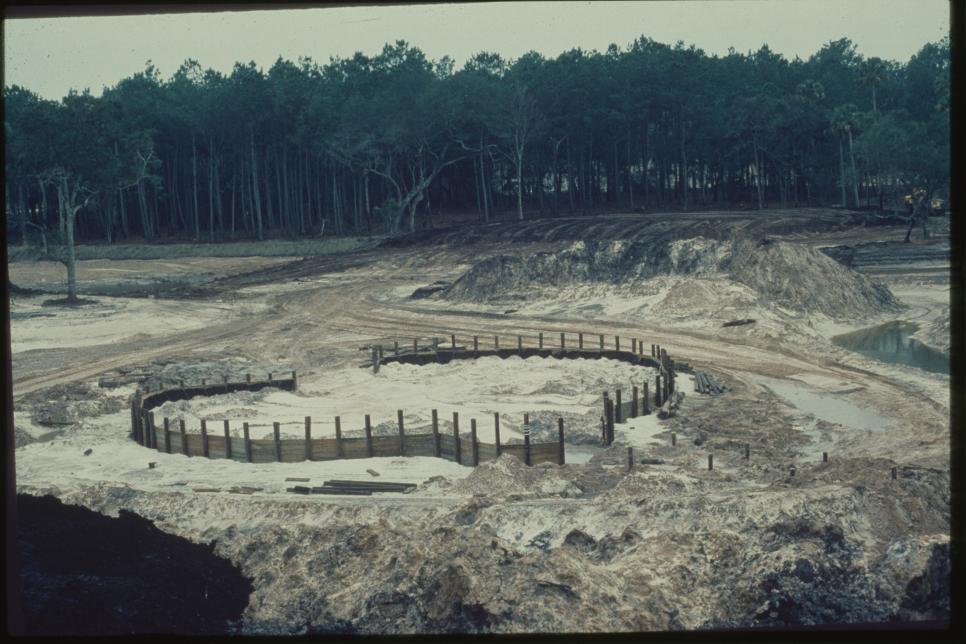If not the most famous hole in golf, Pete Dye’s 17th at the Stadium course at TPC Sawgrass is surely on the podium, perhaps with a couple of other short one-shotters on the Monterey Peninsula and at Amen Corner. But the island green was not the result of some divine architectural plan, rather a creative solution to an unforeseen problem. In fact, the hole was not even supposed to be an island in the original plan.
When compared to the eventual design, Dye’s original plan for the 17th hole was quite benign. As you can see in the early drawing below, the hole was to be a conventional par 3 with a small pond to the right of the green.
“There’s no detail as to the bunkering or other features,” Golf Digest’s Architecture Editor emeritus Ron Whitten says, “but I’m sure Pete was envisioning something along the lines of the 17th hole at Harbour Town, where the water is not really in play.”

What happened? How did Dye make such a dramatic pivot, from tame to terrifying? It was more out of necessity than choice.
A trend in modern golf course architecture is to let the natural contours of the land dictate the design, but that approach would not work when the PGA Tour’s then-commissioner Deane Beman tasked Dye with creating a spectator-friendly championship course in the north Florida swampland.
To build a course on the swamp-site, Dye’s team first dug a moat around the perimeter of the proposed course. All of that digging left tonnes of muck throughout the site – hardly conducive to growing grass.
Dye’s team discovered, however, that underneath the muck was a layer of pure white sugar sand, so in order to take advantage of that, they decided to flip the two layers across the property – digging up all of the muck, setting it aside, digging up all the sand, setting it aside, and then replacing them, muck first with the sand on top.
As you might expect, as the team excavated the course, the deeper and wider the cavity became, especially in the area around the 17th hole. Adding to the issue was Beman’s requirement that there be large, high spectator mounds lining the last three holes. Most of the muck that was dug up was used to create those mounds. So, there was nothing left to fill in the massive cavity around the 17th.
It was then that Dye’s wife, Alice, famously proposed that Pete keep the green where it was originally proposed but make it an island. But Alice wasn’t done. As Pete drew the new island green iteration, he feared the short hole would be too easy.

“Pete didn’t think the hole would be all that hard for pros, so he canted the green towards the back,” Whitten says. “Alice took one look at it and said, ‘I can see the telecast now as the announcer comes on: Ladies and gentlemen, the first threesome is still on the 17th tee. Nobody has been able to stay on the green. We may not finish this tournament.’”
Again, Pete took Alice’s suggestion and raised the back of the green, creating the famed version we know today. So when the leader steps up to the 17th on Sunday at the Players Championship, it’s tough to say whether he should curse or thank Alice Dye. Perhaps both.



